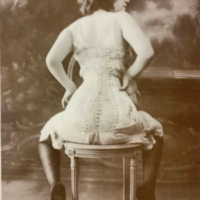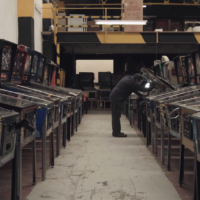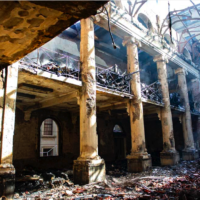
Library of Congress adds 25 motion pictures to the National Film Registry
posted December 15, 2021
The US Library of Congress has announced its annual selection of 25 influential motion pictures to be placed on the National Film Registry. Films in the registry are selected for their cultural, historic, or aesthetic importance. This year’s selected films date from 120 years ago to 2008 and were made by Hollywood studios, independent filmmakers, documentarians, and even film students.

Progress at the Israel Film Archive
posted November 29, 2021
To show what life has looked like in Israel since its founding in 1948, the Israel Film Archive at the Jerusalem Cinematheque has reached a significant milestone. It has completed work on providing English subtitles to all the newsreels in its online collection. It is doing the same for its feature films, which show what creative minds have made of the country.

Representing Sexuality through Film in Toronto
posted November 4, 2021
When films and other media depict unfamiliar forms of sexuality, that may surprise some viewers but it can thrill others by providing them with a sense of validation that acts as a welcome tonic to the sorts of disapproval they may commonly encounter. Promoting understanding and acceptance, as well as providing avenues to solidarity, are among the goals of the Sexual Representation Collection at the University of Toronto.

The Game Cabinets of Youth
posted September 16, 2021
Mario-Paul Martínez’s Arcadeologia visits the workshop floors, meeting rooms, and convention centers where dedicated Spanish enthusiasts are retrieving such machines from dusty mausoleums. He surveys the thriving world of arcade video game restoration in Spain, as well as some of its current outgrowths, long after its heyday in the country and throughout the world.

The Moving Image at the Borderlands
posted August 17, 2021
The Moving Image, the peer-reviewed journal of the AMIA — Association of Moving Image Archivists — is planning a special issue on the theme of Borders and Boundaries. Just what does that theme entail, when it comes to all things moving image?

From Crossroads to Godzilla
posted July 24, 2021
The cinematic legacies of the first postwar nuclear tests: in 1947, Operation Crossroads used more than half the world’s supply of film stock and hundreds of cameras to capture a series of nuclear detonations. The cinematic legacy of such bombs is extensive.
Australian Government’s About-Face on Archives
posted July 1, 2021
In a startling about-face, Australia’s center-right government has announced that it will provide modest funding for emergency maintenance of the country’s National Archives.

Let Them Preserve Cake: Government’s Dismissive Message to Australian Archivists
posted June 28, 2021
Australia’s National Archives is 1,400 years behind schedule if it is to preserve even its current holdings. Its users are not happy. More than 150 prominent cultural figures have addressed an open letter to Prime Minister Scott Morrison, urging his government “to stop the neglect of the National Archives and protect the nation's history.” They have been met by seeming scorn.

How Will an Important Archive Ever Recover?
posted June 10, 2021
After a wildfire destroyed or severely damaged vast amounts of library holdings at the University of Cape Town, in South Africa, librarians and archivists — not just from UCT, but also from around the world — joined an effort to recuperate the losses, to whatever extent is possible. The losses included much of one of the largest collections anywhere of books, films, photographs, and other primary sources relating to African history, including a largely irreplaceable collection of journalists' film and other records from the Apartheid era.

A Curtain Tells of a Town’s Cinema History
posted April 14, 2021
An almost 100-year-old canvas cinema curtain in Queanbeyan, a southeastern Australian town, bears telling witness to the life of the settlement, and to the early history of film exhibition in the region, and the whole country. It’s held in the Queanbeyan Museum and is too big for curators to roll out in their facility, a former police sergeant’s residence. The Museum’s curators count the curtain, which doubled as a sort of advertising hoarding, as one of their most cherished items, in good part for the tale it tells of Queanbeyan life in the 1920s.
